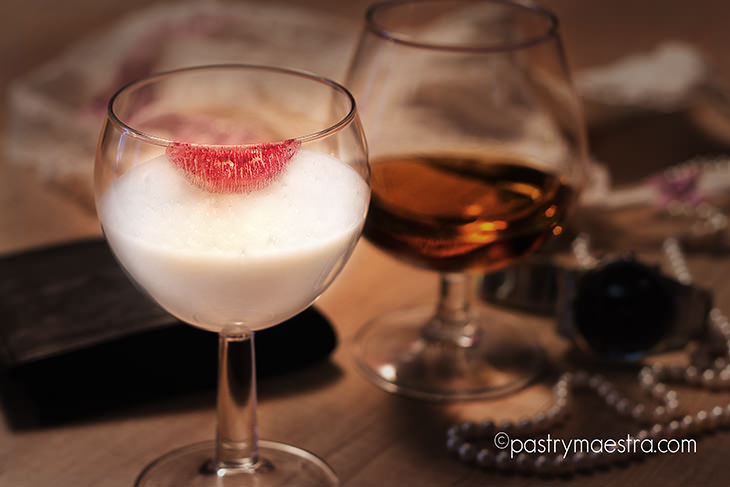
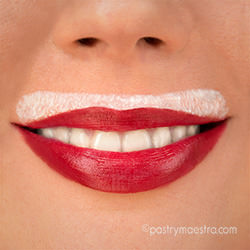
T
here are currently approximately 1.3 to 1.5 billion cows grazing, sleeping, and chewing their cud at any given time on planet Earth. There are an estimated 300 million cattle in India where the cow is a sacred animal.
In a 2006 United Nations’ Food and Agricultural Organization report, it claims that the livestock sector, most of which are cows, “generates more greenhouse gas emissions as measured in CO2 equivalent – 18 percent – than transport.”
So, what’s with cows and methane gas? Cows are mammals called ruminants. Most ruminants have four stomachs, two-toed feet, and store their food in the first chamber of the stomach, called the rumen, before regurgitating it. This regurgitated food is called “cud” and the animals chew it again to help further break it down to make it easier to digest. Inside of the rumen, over four hundred different kinds of microbes exist that also play a critical role in the digestion process. Several of these microbes create methane gas as a byproduct. Due to the sheer number of cows on the planet, along with the large size per cow, our tasty friends produce more methane gas than all other ruminants (sheep, goats, giraffes, and deer) combined.
- Standing at 6ft 4in (app. 193 cm) tall up to her shoulders, 13-year-old Holstein Friesian bovine from Orangeville, Illinois, US. called Blosom, entered the Guinness Record books as the world’s tallest cow.
- The average weight of all cattle is 1,660 lb (753 kg), but the world record for the heaviest bull was 3,840 lb (1,740 kg), a Chianina (Italian breed) named Donetto, when he was exhibited at the Arezzo (Italy) show in 1955.
- The average cow chews at least 50 times per minute and has more than 40,000 jaw movements in a day.
- There are more than 800 different breeds of cattle around the world.
- The average cow drinks 30 to 50 gallons (113-190 liters) of water each day.
- On a daily basis, most cows average about 8 gallons (app. 30 liters) per day. 8 gallons is about 128 glasses of milk per day.
Ubre Blanca (c. 1972 – 1985) was a cow in Cuba known for her prodigious milk production. Ubre Blanca produced 109.5 liters (29 gallons) of milk on a single day in January 1982 – more than four times a typical cow’s production. The cow also produced 24,268.9 liters of milk (about 6411 gallons) in 305 days (one lactation period) ending in February 1982. Both feats were recognized by Guinness World Records as world records.
Big and gassy, thirsty, tall and heavy, cows, not dogs, are our best friends! We eat them and – more importantly – we milk them. We NEED milk, and lots of it because, without milk, there would be no pastry, simple as that! If you take away the milk (meaning-butter, cheese, cream) from pastries what is left? Nothing! Just a dry dessert composed of flour, sugar, nuts and an occasional egg. So, let’s learn about milk!
Milk
Females of all mammal species can by definition produce milk. However, in the food industry we usually use cow’s milk, although we have other kinds of milk available, like sheep’s milk, goat’s milk or even camel’s milk.
Cow’s milk consists primarily of water, about 88%. It contains about 3,2% of fat and 8,5% of other milk solids. Milk is rich in protein, it contains carbohydrate lactose, and it is good source of minerals, such as calcium, and vitamins – A, B6, B12, C, D, K, and E.
In stores, the milk that is sold is usually first pasteurized. Pasteurization is heating any food product to a certain temperature, usually around 70-75ºC (158°F-167°F), and keeping it for certain amount of time at that temperature. Pasteurization destroys some microorganisms, and by that, it increases shelf life.
UHT Milk
UHT milk was processed on Ultra-High-Temperature (138°C-149ºC/280°F-300°F) for 2-6 seconds, and then packaged in sterilized containers. The high temperature kills all the bacteria and other microorganisms in milk, including spores. Its shelf life is even longer, unopened can be kept for at least 3 months.
Powdered Milk
Dry milk powder or powdered milk is a product made by removing all the moisture from pasteurized milk. Powdered milk has much longer shelf life than liquid milk, and it doesn’t need to be kept in the refrigerator. Lack of water in powdered milk prevents the growth of microorganisms. It can be re-hydrated by adding water, or it can be used as a powder. Milk powder is often used in confectionery, in making caramels, and in baking.
Buttermilk
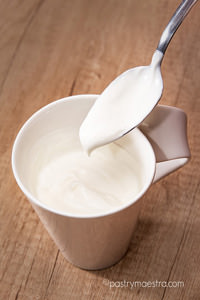
Buttermilk is a name for liquid left after churning cream into butter. That is a traditional way of making buttermilk. However, nowadays buttermilk is made by fermenting milk by adding an acid to the milk, usually lactic acid bacteria. If buttermilk is not available in your area, you can simply make it at home. Add 15ml (1 Tbsp) of lemon juice or white vinegar to 250ml (1 cup) of milk and leave for 15 minutes at room temperature.
Cream
Cream is dairy product composed of higher butterfat layer skimmed from the top of milk before homogenization (intensive blending of substances which is carried out to obtain suspension or emulsion). It is almost indispensable ingredient in making pastries; we use it for lots of creams and custards, in various batters, and in confectionery.
Cream is in most countries sold in several grades depending on total butterfat content:
- Half and half (10.5–18% fat)
- Half cream (12% fat)
- Single cream (18 % fat)
- Light cream (18–30% fat)
- Light Whipping cream (30–36% fat)
- Whipping cream (35% fat)
- Heavy cream (36% or more)
- Double cream (48% fat)
If you need cream for whipping, it should contain more than 30% butterfat.
Clotted Cream
Clotted cream or Devonshire cream is a thick cream made by indirectly heating full-cream cow’s milk. For making clotted cream it is usually used steam or water bath. During heating, fat rises to the surface of the milk and forms “clots” or “clouts”. It has nutty rich flavor and grainy texture. It has very high fat content (55-64%).
Sour Cream
Sour cream is a dairy product made by fermentation of regular cream with the help of certain kinds of lactic acid bacteria – bacterial culture that sours and thickens the cream.
Crème Fraîche
Crème fraîche is a French term for the sour cream that contains 30%-45% butterfat. It is most commonly sold in Europe, but it is gaining popularity in the United States so it can be found in specialty grocery stores and on Amazon.com. Also, crème fraîche can be made easily at home. To make it, pour 250 ml (1 cup) of heavy cream into a clean jar, add 30ml (2 Tbsp) of buttermilk or yogurt, cover the jar tightly, and shake it for about a minute. Leave it to rest for 8 to 24 hours at room temperature, or until the crème fraîche thickens slightly. How quickly it thickens will depend on the temperature of the room—the warmer the room, it will become thick more quickly. When it has thickened, chill the crème fraîche in the refrigerator for a day before you use it. Crème fraîche can be kept covered in the refrigerator for about 2 weeks, but keep in mind that it will get tangier and tangier day after day.
Cream Cheese
Cream cheese is soft, mild-tasting cheese with high-fat content. It is made of unskimmed milk enriched with additional cream. The most famous brand of cream cheese in Philadelphia, it is used for cheesecakes, or as a spread on bread, bagels and crackers.
Yogurt
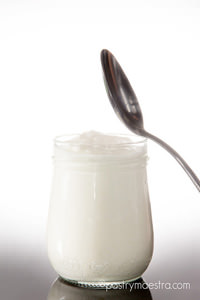
Yogurt is fermented milk product. It is made by bacterial fermentation of milk with the assistance of bacteria, also called “yogurt cultures”. Yogurt is nutritionally rich in protein, calcium, vitamin D, riboflavin, vitamin B6, and vitamin B12. It has nutritional benefits beyond those of milk. Its fat content can vary, from low-fat sorts with 2% fat to Greek-style yogurt with 10% of fat.
Mascarpone
Mascarpone is Italian soft and creamy cheese made from cream and coagulated with citric or acetic acid. It has a fat content of 70-75%. Mascarpone is used in a large number of Italian dishes, but it is the most famous for Tiramisu – an Italian dessert made with mascarpone cheese, eggs, coffee, and ladyfinger cookies.
Ricotta
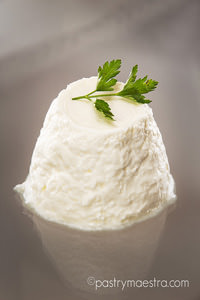
Ricotta is another soft, mild and creamy Italian cheese, but this one contains only 4-10% fat. It is made of sheep, cow or goat milk whey. Whey, also called milk serum or milk permeate, is the liquid remaining after milk has been curdled and strained. It is a by-product of the production of cheese or casein. Ricotta is a favorite component of many Italian desserts, such as cheesecakes and cannoli – a traditional Italian treat. There is also a variety of different cookies that include ricotta as an ingredient.
Ah, all this talk about creamy-cheese-yummy treats made me very hungry so I’ll finish this article right now and dig into Tiramisu that’s cooling in my fridge. And – do you remember how I’ve said that without milk, we – pastry fans would be literally left high and dry? Yes, dairy and desserts go together like coffee and doughnuts, like peanut butter and jelly, like black and white spots on a Holstein cow. And surely – like chocolate shavings and cocoa powder on my Tiramisu!



